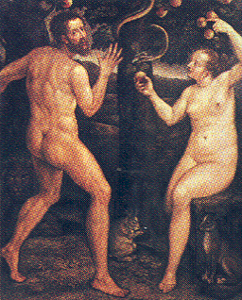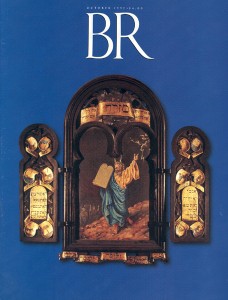The Fall of Man


With a feathered crest, hooked beak and beady eye, the face of a peacock hovers above the plump ripe fruit proffered by Eve, in a detail from The Fall of Man, attributed to the 16th-century Netherlandish artist, Michael Coxie.
Although in early Christian art the peacock symbolized immortality and the Resurrection (the ancients believed the bird’s flesh was incorruptible), in Renaissance images the bird bore more sinister connotations.
As early as the 14th century, Chaucer described the miller in his “Reeve’s Tale” as “proud as a peacock.” Leonardo da Vinci noted that “we read of the peacock being more subject to [this vice] than any other creature, because it is always contemplating the beauty of its tail.” In art, the proud bird came to be associated with the devil, whose pride led to his fall from grace.
The devil was traditionally identified with numerous insidious figures in the Bible, including the serpent of the Garden of Eden and “Lucifer, son of the morning,” who tried to “ascend to heaven” and “raise [his] throne above the stars of God,” but instead fell, according to the prophet Isaiah, “to Sheol, to the depths of the Pit” (Isaiah 14:12–15).
Already a library member? Log in here.
Institution user? Log in with your IP address.

